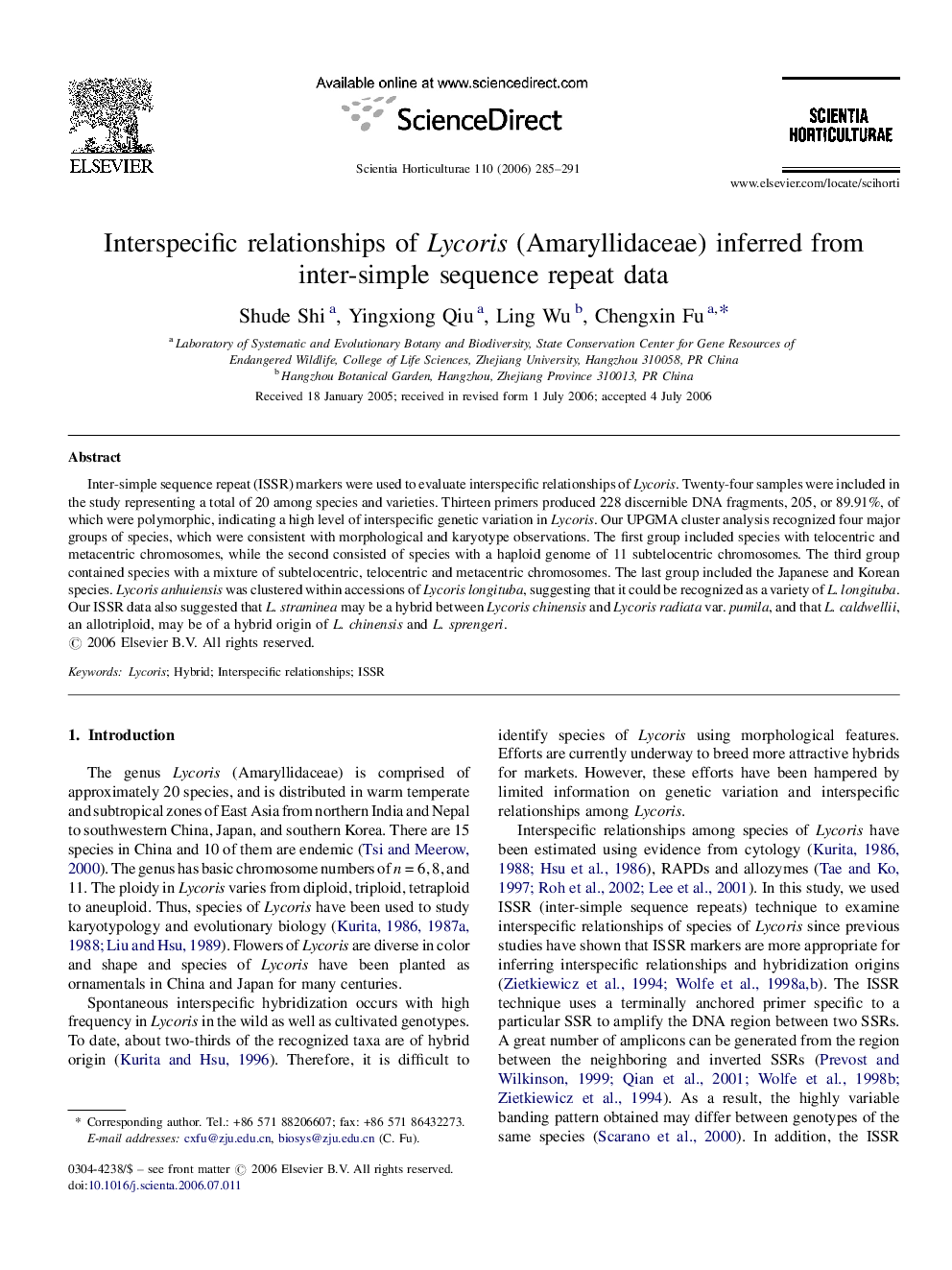| Article ID | Journal | Published Year | Pages | File Type |
|---|---|---|---|---|
| 4570003 | Scientia Horticulturae | 2006 | 7 Pages |
Inter-simple sequence repeat (ISSR) markers were used to evaluate interspecific relationships of Lycoris. Twenty-four samples were included in the study representing a total of 20 among species and varieties. Thirteen primers produced 228 discernible DNA fragments, 205, or 89.91%, of which were polymorphic, indicating a high level of interspecific genetic variation in Lycoris. Our UPGMA cluster analysis recognized four major groups of species, which were consistent with morphological and karyotype observations. The first group included species with telocentric and metacentric chromosomes, while the second consisted of species with a haploid genome of 11 subtelocentric chromosomes. The third group contained species with a mixture of subtelocentric, telocentric and metacentric chromosomes. The last group included the Japanese and Korean species. Lycoris anhuiensis was clustered within accessions of Lycoris longituba, suggesting that it could be recognized as a variety of L. longituba. Our ISSR data also suggested that L. straminea may be a hybrid between Lycoris chinensis and Lycoris radiata var. pumila, and that L. caldwellii, an allotriploid, may be of a hybrid origin of L. chinensis and L. sprengeri.
